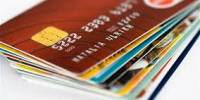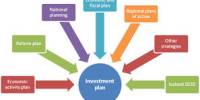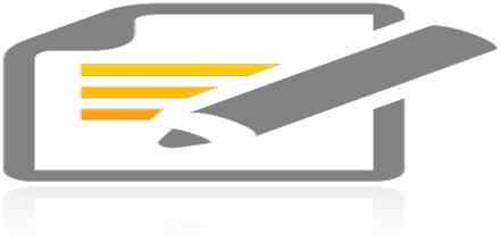GENERAL BANKING
General Banking Department performs the core functions of the bank. It deals day to day transactions. It takes the deposit from the customer and meets the customer demands for cash by honoring their checks. Broadly, it has the following core heads-
- Accounts Opening Section
- FDR And Ancillary Services Section
- Local Remittance Section
- Collection And Clearing
- Cash Section
- Accounts Section.
ACCOUNTS OPENING SECTION
Banker-customer relationship begins with the opening of an account by the customer. Opening of an account binds the same into a contractual relationship. But the selection of customer is very crucial. In fact, fraud and forgery of all kinds start by opening of an account by the customer (s). So, the bank takes extra care in its selection. One of the basic functions of commercial banks is to accept deposits. For accepting deposits both demand and time, BASIC Bank Mirpur branch offers the following types of accounts-
A. Demand deposits (Withdraw able on demand)
- Saving Bank Account
- Current Account
B. Time deposits (Payable at a fixed date or after a period of notice)
- Fixed Deposit Receipt (FDR)
- Short Term Deposit (STD)
Types of Accounts with Terms and Conditions
This part covers only following types of accounts-
- Savings Bank Account
- Current Account
- Short Term Deposit (STD) Account
Savings Bank Account
This deposit is primarily for small-scale savers. Hence, there is a restriction on withdrawals in a week. Heavy withdrawals are permitted only against prior notice. Some Important Points are as follows-
- Minimum opening deposit of Tk.1000/= is required;
- Check book issuing balance is also the same (Tk. 1000/=);
- Withdrawal amount should not be more than 1/4th of the total balance at a time and limit twice in a week;
- Interest rate is 7.5% including 10% excise duty on interest rate. Interest paid twice in a year depending on monthly minimum balance. When money is deposited within 5 of the following month, then it is counted as monthly minimum balance. If the interest amount is more than Tk. 200 or more, the bank is paid the amount to the customer. Otherwise it is treated as Bank’s Shadow Profit;
- Can open the A/c individually or jointly. In case of joint a/c, Joint signature is required if not authorized otherwise;
- Minor (For withdrawal purpose), lunatic, insolvent, pardanshin women (Not mandatory) can not open such type of account.
Current Account
Current account is purely a demand deposit account. There is no restriction on withdrawing money from the account. It is basically justified when funds are to be collected and money is to be paid at frequent interval. It is most suitable for private individuals, traders, merchants, importers and exporters, mill and factory owners, limited company’s etc. Some Important Points are as follows-
- Minimum opening deposit of TK.5000/- is required;
- There is no withdrawal limit. But in case of large amount say 2 lac or more, bank requires one day before notice;
- No interest is given upon the deposited money;
- The Banker is under an obligation to repay these deposits on demand. So, they are called demand liabilities of a Banker.
- The primary objective of such account is to save big customers like businessmen, join stock companies, public authorities, etc. from the risk of handling a lot of cash.
- The cost of providing current account facilities is considerable to the Bank as they make payments and collect the bills, drafts, and checks for any number of times daily. The Bank is, therefore, do not pay interest on current deposits. At the same time, BASIC bank charges Tk. 200 as Incidental fee;
- Minimum Tk. 1000 balance must always maintain all the time;
- Minor can not open such type of account;
- Account holder can enjoy SOD or even TOD facility.
STD (Short Term Deposit) Account
Normally various big companies, organizations, Government Departments keep money in STD account. Frequent withdrawal is discouraged and requires prior notice. In BASIC, customers usually give an instruction that their current account will be debited whenever its deposited amount crosses a certain limit and this amount will be transferred to the STD account. The deposit should be kept for at least seven days to get interest. The interest offered for STD is less than that of savings deposit. Interest is calculated based on daily minimum product and paid two times in a year. Interest rate is 5.75% including 10% excise duty on interest rate.
COMMON FORMALITIES REQUIRED FOR EVERY ACCOUNT
- Duly filled up Account Opening Form.
- Introducer’s signature on Account Opening Form to be verified by Manager under full signature.
- Two copies of passport size photograph of account opener(s) duly attested by the introducer.
Note: Mandate or authority form filled up by an individual (s) or account openers are to be obtained if the customer wants to authorize another person to operate an account on behalf of him/ them.
Documents Required For Each Account Separately
In case of Proprietorship Firm-
- Declaration of proprietorship.
- Trade licence.
- Tax Identification No (TIN) directed by Bangladesh Bank.
In case of Partnership Firm-
- Account must be opened in the name of the firm.
- The firm should describe the names and addresses of all partners.
- Board Resolution signed by all partners to open the A/C.
- Photocopy of partnership deed duly attested by notary public.
- Letter of partnership duly signed by all partners.
- Trade licence from municipality.
- Tax Identification No (TIN) directed by Bangladesh Bank.
In case of Private Limited Join Stock Company-
- Memorandum of Association and Articles of Association duly certified by Chairman or Secretary.
- Board Resolution duly certified by Chairman/ Secretary authorizing to open the A/C with the bank and mentioning the name of the person (s) who will operate the A/C as per provisions of Articles of Association.
- Certificate of incorporation duly certified by Chairman or Secretary.
- List of all Directors with Designation, Address & Specimen Signature duly certified by Chairman or Secretary (Form XII).
- Latest copy of Balance Sheet
- Power of attorney.
- Tax Identification No (TIN) directed by Bangladesh Bank.
In case of Public Limited Join Stock Company-
- Photocopy of Registration certificate certified by Chairman or Secretary.
- Memorandum of Association and Articles of Association duly certified by Chairman or Secretary.
- Board Resolution duly certified by Chairman/ Secretary authorizing to open the A/C with the bank and mentioning the name of the person (s) who will operate the A/C as per provisions of Articles of Association.
- Certificate of commencement duly certified by Chairman or Secretary.
- List of members of Managing/ Executive duly certified by Chairman or Secretary.
- Tax Identification No (TIN) directed by Bangladesh Bank.
In case of Societies/Clubs-
- Certified copy of Registration certificate under the societies Registration Act, 1962.
- Certified copy of Resolution for opening and operation of account.
- Certified copy of Bye-laws & Regulations/ Constitution.
- Power of Attorney.
In case of Cooperative Society–
- Copy of Bye-law duly certified by the Co-operative officer.
- Up to date list of office bearers.
- Resolution of executive Committee as regards of the account.
- Certified copy of Certificate of Registration issued by Registrar, Co-operative Societies.
In case of Non-Government College/ School/ Madrasha, –
- Up to date list of the Governing Body/ Managing Committee.
- Copy of Resolution of the Governing Body/Managing Committee authorizing opening and operation of the account duly certified by Gazetted Officer.
In case of Minor’s account-
- Putting the word “ MINOR” after the title of the account.
- Recording special instruction of operation of the account.
- The account opening form is to be filled in and signed by either of the parents or the legal guardian appointed by the Court of Law & not by the Minor.
Issuing Cheque Book
For New and Old Account
Fresh checkbook is issued to the account holder only against requisition on the prescribed application form. In case of old account, requisition made on the prescribed requisition slip attached with the checkbook issued earlier. Generate a security no randomly for every check leaf by Manager or authorized person. Prepare the instrument with respective security no on the back of each leaf and signed by the authorized person. Make necessary entries in Check Issue Register. Finally issue the checkbook for client (s).
For Duplicate Check Book
Duplicate checkbook in lieu of lost one is issued only when an A/C holder personally approaches to the bank with an application agreeing to indemnify the bank for the lost check book. Verify signature of the A/C holder with the specimen signature card. Series number of lost checkbook is recorded in the stop payment register and caution should be exercised to guard against fraudulent payment.
Account Enquiry
A customer can obtain the statement of his A/C by submission of an application in prescribed balance enquiry receipt. Normally it is supplied two times in a year. In addition, customer can know his current deposit position informally.
Transfer of an Account
Account holder may transfer his account from one branch to another. For this, he/she must apply with proper reason to the manager of the branch where he is maintaining account. Manager then requests to the manager of that branch where the A/C holder wants to transfer his account. Besides, he also sends original copy of account opening form and SSC (Specimen Signature Card) and photocopy of application for transferring the account with the balance remained in the account.
Closing of an Account
An account may close-
- When the customer desirous to close the account.
- When the account is inoperative for a long time.
- In case of customer’s death, insanity or insolvency.
- When the court on that particular A/C issues Garnishee Order.
To close an account, the checkbook is to be returned to the bank. BASIC bank charges Tk. 200/= for the same by debiting the amount from his account and rest amount is then paid to the customer. Necessary entries are given to the account closing register and computer. Finally make sure that A/C holder is completely free from all dues.
Table- Excise Duties Applicable: For All Kinds of Deposits
| Sl. No. | Deposit Amount Limit | Charge |
| 1. | Up to 10,000 | Zero |
| 2. | 10,001 to 1,00,000 | Tk. 120 |
| Sl. No. | Deposit Amount Limit | Charge |
| 3. | 1,00,001 to 10,00,000 | Tk. 250 |
| 4. | 10,00,001 to 1,00,00,000 | Tk. 500 |
| 5. | 1,00,00,001 to 5,00,00,000 | Tk. 2500 |
| 6. | 5,00,00,001 and above | Tk. 5000 |
Source: SRO no.137-Aine/96/248-excise, date 28-7-96, NBR
FIXED DEPOSIT RECEIPT (FDR)
FDR Account
Fixed deposits are time deposits or time liabilities. These are the deposits in which an amount of cash is deposited in Bank for a fixed period specified in advance. Before opening a Fixed Deposit Account a customer has to fill up an application form which contains the followings-
- Amount in figures
- Beneficiary’s name and address
- Time period
- Rate of Interest
- Date of Issue
- Date of maturity
- How the account will be operated ( singly or jointly)
- Signature (s)
- F.D.R. no.
- Special instructions (if any)
After fulfilling the above information and depositing the amount, FDR account is opened and a FDR receipt is issued and it is recorded in the FDR Register which contains the following information-
- FDR account no.
- FDR (Fixed Deposit Receipt ) no.
- Name of the FDR holder with address
- Maturity period
- Maturity date
- Interest Rate
In case of FDR Account, the bank does not have to maintain a cash reserve. So, BASIC bank offers a high interest rate in these accounts. The revised interest rates for FDR effected from November 05, 2001 followed by BASIC are-
a) For 3 months & above @ 8.25 %
b) For 6 months & above @ 8.50 %
c) For 12 months & above @ 8.75 %
d) For 24 months & above @ 9.25 %
In case of encashment of FDR [say for Tk.X ] on maturity, following accounting treatments are given-
Interest on FDR A/C ——————————-Cr. [say Tk. P]
Excise Duty on FDR ——————————-Dr [say Tk. Q]
10 % Income Tax on interest ——————— Dr. [say Tk. R]
FDR A/C ———————————————Dr. [Tk. (X+P-Q-R)]
Cash A/C ———————————————Cr. [Tk. (X+P-Q-R)]
If the customer wants to draw the interest only, then the following entries are given –
Interest on FDR A/C ——————————–Dr.
Cash A/C ———————————————Cr.
Renewal of FDR
Customer supposes to inform the bank in writing 15 days before the maturity date for encashment. If not, bank normally renews the amount just after the maturity date. Renewal will be for previously agreed maturity period.
Loss of FDR
If the instrument is lost from the possession of the holder, the holder is asked to fulfill the following requirements-
a) Holder should inform the bank immediately
b) Record a GD (General Diary) in the nearest Police Station.
c) Furnish an Indemnity Bond
On fulfilling the above requirements, BASIC bank is then issued a duplicate FDR.
Table- Pre-mature Encashment of FDR
| Period | Pre-mature Encashment | Interest Rate | |
| 01 | 3 months | Before 30 days | No Interest |
| Every completed calendar months | SB (Savings Bank) Rate | ||
| 02 | 6 months | Before 3 months | SB Rate |
| Before maturity but completes 3 months | Interest payable at 3 months Rate for a period of 3 months | ||
| 03 | 12 months | Before 3 months | SB Rate |
| Before expiry of 6 months | Interest payable at 3 months rate for a period of 3 months | ||
| After expiry of 6 months but before maturity | Interest payable at 6 months rate for a period of 6 months | ||
| 04 | 24 months | Before 3 months | SB Rate |
| After expiry of 6 months but before maturity | Interest may be allowed at 6 months rate for a period of 6 months | ||
| After expiry of 12 months but before maturity | Interest may be allowed at 12 months rate for a period of 12 months |
Source: Mirpur Branch, BASIC Bank Ltd.
SANCHAYAPATRA
BASIC bank Mirpur branch is unique for selling Sanchay patra to its customers as its ancillary services on behalf of govt. Sanchay patra is issued by Jatio Shanchay Bureau, guided by Bangladesh Bank. It is received from Bangladesh Bank (BB). People purchasing these bonds by depositing money in this branch and payment are made on maturity to customers from this branch only. Every transaction is reported to BB. Within 72 hours, otherwise penalty is imposed. Money is realized from BB after making payment to customer. This branch gets 1% commission for this service. As a whole following things are conducted by this section-
- Selling of Shanchaypatra
- Making payment on maturity
- Reporting to Bangladesh Bank
- Calculation of interest
- Accounting.
Details of Shanchaypatra
Table- Showing different types of shanchaypatras
| Sl | Types | Limit | Interest |
| 1. | 8 years Pratirakha Shanchay Patra | Singly- 15 Lac. | After 1 year 8.75% and per yr. 1% increases and on maturity 15.75%. |
| Jointly- 30 Lac. | |||
| 2. | 5 years Bangladesh Shanchay Patra | Singly- 15 Lac. | After 1 year 8.50% and per yr. 1% increases and on maturity 12.50%. |
| Jointly- 30 Lac. | |||
| 3. | 5 years Investment Scheme on 6 months rest | Singly- 10 Lac. | Interest rate – 12% |
| 4. | 3 years Investment Scheme on quarterly rest | Singly- 20 Lac. | Interest rate – 12% |
| Jointly- 40 Lac. | |||
| 5. | 5 years Paribar Shanchay Patra | Singly- 10 Lac. | Interest rate- 11.92%. For premature withdrawal Postal Shanchay Bank Simple Interest Rate is applicable. |
Source: Circular letter no. BASIC/HO/CAD/2001/6814 date 30.10.2006
LOCKER SERVICE
BASIC Bank Mirpur branch is also unique for providing locker service to its customers. People usually keep their valuables for securing purpose.\
Terms and Conditions
Renter must have an account either current or deposit.
- All rentals are payable annually in advance.
- Lockers will be rented for a period of one year in the first instance and will automatically be renewed thereafter from year to year until terminated.
- In order to terminate the hire written notices must be given at least one week period to the expiry date of the hire and the locker with its keys must be surrendered to the bank.
- The renter shall have access to the locker at anytime during the Bank’s business hours.
- Lockers may be hired in two or more names but not exceeding four and in such cases the renters must give explicit instructions as to whether access is to be allowed to either renters singly or two or more of their member jointly.
- If the renter loses the keys of the locker the bank must be notified without delay. In such an even all expenses the renter shall pay regarding breaking the locker and substituting a fresh lock and keys.
- In respect of the hire of safe deposit lockers the relationship between the bank and the renter is that of a licensor and licensee and not that of banker and customer.
Table-: Locker service at a glance
| Type of Locker | Size (in cm.) | Total No. | Rented | Annual Charge |
| Small | 58 X 19 X 12.5 | 90 | 06 | Tk. 1200 |
| Medium | 58 X 35.5 X 12.5 | 45 | 08 | Tk. 1800 |
Note: Tk. 1500/= (Refundable) is applicable for all kinds of lockers as security charge.
LOCAL REMITTANCE SECTION
Cash remitting from one place to another is risky. So, Banks remit funds on behalf of the customer (s) to save them from any awkward happening through network of their branches. There are three modes of remitting funds. These are–
- Pay Order (PO)
- Demand draft (DD)
- Telegraphic Transfer (TT)
- Call Deposit Receipt (CDR).
PAY ORDER (PO)
Pay order is an instrument, used to remit fund within a clearing zone. Unlike cheque, there is no possibility of dishonoring PO. The PO can only be encashed through the branch that has issued the instrument.
Pay Order Issuing Process
For issuing a PO, following formalities are to be maintained. These are-
- Duly filled up the application form by the customer.
- Deposit money either in cash or by cheque with necessary charges.
- Prepare the instrument and make necessary entries in the Bills Payable Register where payee’s name, date, PO no. etc are noted.
- Deliver the instrument to the customer after scrutinized and approved by authority by taking signature of the customer on the counterpart.
Accounting Entry for Pay Order
Drawer’s/Issuer’s A/C —————————-Debit
Bills Payable (PO) A/C———————————-Credit
Income A/C Commission—————– ————–Credit
Income A/C Postage————————————–Credit.
Payment order is a current liability on the part of bank, which is required to be discharged by the beneficiaries against payment in cash or through an account.
Modes of Purchasing Pay Order
a) By cash
b) By account
c) By transfer of money.
Payment of Pay order
As the PO issued by the bank is crossed one it is not paid over the counter. On the contrary, this amount is transferred to the payees’ account. To transfer the amount the payee must duly stamp the PO. The a/c treatments will be-
Bills Payable A/C———————-Debit
HO A/C ‘Y’ branch————————–Credit.
Note: Before payment is made, it is duty for issuing bank to examine whether endorsement was given by the collecting bank or not. If not, dishonor the instrument and marking the instrument ‘Endorsement Requirement’.
Cancellation of PO
The following procedure is followed to refund the pay order by cancellation:
- Submit written request to refund the pay order attaching therewith the original PO.
- Verify purchaser’s signature with the original application form on record.
- Manager/ authorized person’s prior permission is required before refunding the amount of pay order.
- Pay order should be affixed with a stamp ‘cancelled’ under proper authentication and the authorized officer’s signature on the pay order.
- No charge is created for cancellation. Refund only the pay order amount.
- The original entries are to be reversed with proper narration.
- Record the cancelled pay order in the Pay Order Issue Register.
Loss of Pay Order
If the instrument is lost, the holder is asked to fulfill the following requirements-
a) Holder should inform the bank immediately.
b) Record a GD (General Diary) in the nearest Police Station.
c) Furnish an Indemnity Bond.
On fulfilling the above requirements, BASIC bank is then issued a duplicate pay order and marked ‘In lieu of’. Banker will also mark ‘stop payment’ on the Bills Payable Register.
Collection of Pay Order
If the payee is a customer of Mirpur branch, he will deposit it for collection. Then the branch gives necessary endorsement as a collecting bank. Then the instrument places the issuing bank through clearing house.
PO Charge
A commission of TK.40/= is charged for a pay order.
DEMAND DRAFT (DD)
DD is called ‘Banker’s Draft’. It is an instrument, issued by a particular branch, drawn on another branch of the same bank, instructing to pay a certain sum of money. It is very popular instrument for remitting fund from one corner of a country to another. DD is issued in favour of a customer who maintains an a/c with BASIC Mirpur branch. It can be issued against Cash or Cheque. If DD amount is more than Tk.50000/=, a test code is given on IBCA. The a/c treatments will be-
When DD is issued:
Cash/Customer A/C……………………Debit
H/O A/C ‘X’ branch…………………………Credit
Income A/c commission………………..……Credit.
After giving these entries an Inter Bank Credit Advice (IBCA) is prepared which contains the controlling number, depicted that the branch is credited to whom it is issued. An IBCA implies the following entries-
H/O A/C issuing branch………………Debit
Drawn on branch……………………………Credit.
Payment Process of DD
After receiving the instrument, the IBCA lodgment is done by the branch. Necessary entries are given in DD Inward Register. Controlling number of the IBCA should match with the serial number of this register. The following accounting entries are made in following cases-
When IBCA comes
H/O A/C Issuing branch………………………Dr
DD Payable A/C ……………………..……….Cr
When instrument comes
DD payable A/C.………………………………Dr
Customer’s A/C..………………………………Cr
If advice does not come but instrument comes
Suspense A/C………………………………….Dr
Party A/C………………………………………Cr
When advice comes
HO A/C Issuing Branch ……………………….Dr
Suspense A/C…………………………………..Cr
The banker even on receiving instructions from the remitter cannot stop the payment of the instrument. Stop payment can be done in the following cases-
i) Loss of draft before endorsement: In this case, “Draft reported to be lost, payee’s endorsement requires verification” is marked.
ii) Loss of draft after endorsement: In this case, the branch first satisfies itself about the claimant and the endorsement in his favor.
Cancellation of DD
To cancel an issued DD, the client has to submit an application. Issuing branch then sends an Inter Branch Debit Advice (I.B.D.A.) to the drawn branch against previously issued Inter Branch Credit Advice (IBCA). After that the following entries are given-
H/O A/C drawn on branch————————-Dr.
Client’s A/C —————————————-Cr.
Issuing of Duplicate DD
If the customer wants a duplicate DD, he then is asked to do the following formalities-
- Throwing an application immediately by the original DD holder.
- Making a General Diary (GD) in the nearest Police Station.
- Furnishing an Indemnity Bond.
- Put a ‘CAUTION’ mark in the register.
- Inform to the Head Office by the issuing branch.
- Inform all the branches by the HO for stop payment.
- Issue a new DD (Put the same DD no. and mark DUPLICATE).
DD Charge
Commission @ 0.15% but minimum Tk.50/=.
Postage charge Tk. 20/= (Fixed).
DD cancellation charge Tk. 50/= (Fixed).
TELEGRAPHIC TRANSFER (TT)
Sometimes the remitter of the funds requires fund immediately. In that case, the banker is requested to remit the funds telegraphically. Different modes are Telegram, Telephone, Telex, Fax. Telegraphic Transfer is the most rapid and convenient but expensive method. The drawer and the payee should have accounts with BASIC bank. TT is issued against cash, cheque, and letter of instruction.
Procedure for Issuing TT
Following procedure is followed for issuing a TT.
a) Deposit money by the customer along with application form.
b) In receipt of money a cost memo is given to the customer containing TT serial number which informs the awaiting party of the paying branch by the customer.
c) Tested telex message is prepared where TT serial number, notifying party’s name is mentioned.
d) The telex department confirms transmission of the message.
e) Necessary entry is given to the ‘TT Outgoing Register’. Entries are as follows-
Cash/Respective A/C (Issuer)……………..Dr
HO A/C Paying branch………….…………Cr (Principal amount)
Income A/C (Commission)…………………Cr
Procedure for Incoming TT
After receiving the telex, it is authenticated by tested. TT serial number is verified with the ‘TT Incoming- Concern branch’ Register. Voucher is released in this regard giving the following accounting entries-
HO A/C Paying branch——————————Dr
Customer A/C—————————————-Cr.
TT Charge
- Commission @ 0.15% of the Principal Amount but minimum Tk.200/=.
- Telex charge Tk. 50/= (Fixed).
CALL DEPOST RECEIPT (CDR)
CDR is also an instrument, issued by a particular branch, drawn on another branch of the same bank, instructing to pay a certain sum of money not over the counter to a certain person or his order. It is as like as Pay Order (PO), but main difference is that PO is treated as bills payable and CDR is treated as sundry deposit. From banker’s point of view, it is always desirable but its practice is limited. Only Tk. 40/= (Fixed) is charged for this facility. If CDR amount is more than Tk.50000/=, a test code is given on IBCA.
When issuing the instrument, accounting treatment will be-
Party A/C—————————–Debit
HO A/C drawn on branch—————-Credit.
After receiving the instrument, accounting treatment will be-
HO A/C Issuing branch————–Debit.
Party A/C————————————Credit.
Besides, Staff and very Valued Customer’s of the bank enjoy Direct Fund Transfer facility. In this case, no commission is charged.
COLLECTION AND CLEARING SECTION
collection
In modern banking the mechanism has become complex as far as smooth transaction and safety is concerned. Customer does pay and receive bill from their counterpart as a result of transaction. Commercial bank’s duty is to collect bills on behalf of their customer.
After that, the following entries are given and a debit voucher is prepared-
Balance with Bangladesh Bank——————Debit
Customers’ A/C —————————————-Credit.
Receiving Cheques For Collection
In BASIC Bank Limited, cheques of its customers are received for collection from other banks. In case of receiving cheques, following points should be checked very carefully-
1) The check should not carry a date older than the receiving date for more than 6 months. In that case it will be a ‘Stale Check’. Again the check should not be a ‘Post dated’ one.
2) The amount both in words and figures of the pay-in-slip should be the same and also it should be in conformity with the check’s amount both in figures and words.
3) The name mentioned both in the check and the pay-in-slip should be the same.
4) The check must be crossed.
5) Collecting banker must check whether endorsement is done properly or not.
| ENDORSEMENT | IN CASE OF |
| Payee’s A/C will be credited on realization | Bills for collection |
Types of Bills for Collection
- Outward Bills for Collection
- Inward Bills for Collection.
A. Outward Bills for Collection (OBC)
If the bill is beyond the clearing range then it is collected by OBC mechanism. Customer deposits cheques, drafts etc. for collection, attaching with their deposit slip. Instruments outside the clearing range are collected through OBC mechanism. A customer of BASIC bank Mirpur branch is depositing a check say of Janata Bank, Kotchandpur branch, Jhenidah. Now as a collecting bank, Mirpur branch will perform the following tasks-
Procedure of OBC
a) Depositing the cheque along with deposit-slip
b) Crossing of cheques are done indicating Mirpur Br. as a collecting bank
c) Endorsement “Payee’s A/C will be Credited on realization” is given
d) Entries are given in the Outward Clearing Register.
Collecting bank can collect it either by its branch or by the drawer’s bank. They will forward the bill to that particular branch. OBC number will give on the forwarding letter. Now following procedures will take place in case of the following two cases.
Bills Collected through Branch
Collecting branch will receive an I.B.C.A. from that particular branch. Accounting treatment from collecting branch’s point of view will be-
HO A/C concerned branch ………………….….Debit
Customer A/C …………………………………….…….…Credit
Income A/C on commission/ Postage…………….Credit.
The process of collection is described below:
a) If the bill is drawn on BASIC Bank Mirpur Branch–
- Bills are sent to that branch through mail or courier;
- Branch collects the bills and sends an IBCA to that Branch;
- Depositor’s account is credited.
b) If the bill is drawn on another Bank and there is a branch of BASIC –
- Branch sends the bill direct to the branch of BASIC by OBC schedule.
- Request them to send the proceeds by IBCA and collect the bill.
- That branch of BASIC can collect the through clearing house arrangement exists there.
c) If the bill is drawn on another bank but there is no branch of BASIC-
- Bill is directly sent to that Bank
- Request them to send a draft in favour of this bank by an OBC schedule.
- That bank sends a DD mentioning the Paying Bank
- Then the bill is collected through clearing house process.
Balance Sheet Effect
OBC creates asset and liabilities simultaneously for bank. When send for collection, it is bank’s liability and as well as customer’s liability i.e. banks asset.
- Liability head Bills for collection being bills receivable as per contra
- Asset head Bills receivable being bills for collection as per contra.
Customers liability A/C…………………………Debit
Bankers liability A/C…………………………………Credit.
After realization (Even if dishonored)
Banker’s liability A/C…………………………………Debit
Customer liabilities A/C……………………………………Credit.
After realization the contra is settled. This item is a stock variable of balance sheet at a particular date.
Balancing
Balancing is done on the banker’s liability account. The year end balance is shown on balance sheet.
B.Inward bills for collection (IBC)
When the banks collect bills as an agent of the collecting branch, the system is known as IBC. In this case the bank will work as an agent of the collection bank. The branch receives a forwarding letter and the bill. Next steps are as follows-
- Entry in the IBC register
- An IBC number is given on the bill.
- Endorsement given- “Our branch endorsement confirmed”
- The instrument is sent for clearing.
Accounting Entries-
Clearing………………………………………………Debit
Miscellaneous Creditor A/C OBC ……………….Credit.
If honored, the accounting treatment will be-
Miscellaneous Creditor A/C OBC…………Debit
H.O. Collecting branch A/C………………..……Credit.
An IBCA is dispatched in this regard
HO A/C agent branch………………………Debit
HO A/C collection branch…………………..…..Credit.
If dishonored,
The instrument is returned to the collecting branch along with a return memo.
CLEARING
According to the Article 37 (2) of Bangladesh Bank Order, 1972, the banks which are a member of the clearing house are called as Scheduled Banks. The scheduled banks clear the cheques drawn upon one another through the clearing house. This is an arrangement by the central bank where everyday the representative of the member banks sits to clear the cheques. For clearing there is a department in every Bank. This department receives cheques, drafts and like instruments from its customers for the purpose of collection with a deposit slip over the counter crediting their accounts. Clearing of cheque is done through the clearing house in Bangladesh Bank. Everyday the first hour starts at 10.00 a.m. and returns house at 5.00 p.m.
Types of cheques for clearing
- Inward clearing cheques.
- Outward clearing cheques.
A. Inward Clearing Bills
It refers the instument drawn on BASIC bank Mirpur Branch Limited, received from other banks in the clearing house by their representative (s). Settlement process-
Accounting entry passed by this branch:
Respective A/C …………………………Debit
Head Office A/C (Main Br.) ..………………..Credit.
If cheques are returned, BASIC Bank Mirpur Branch passes an IBDA to Main Branch. Then the necessary accounting entries will be-
HO A/C (Main Br.) ……………………..Debit
Respective A/C ………………………….……Credit.
B. Outward Clearing Bills
It refers the instruments drawn on the other banks received by BASIC bank Mirpur Branch. They are of three kinds as follows-
a) Cheques drawn on another branch of BASIC. The settlement process
b) Cheques drawn on another Bank which is situated within clearing house area.
CASH SECTION
Cash is the lifeblood of all financial activities. Cash section is a very sensitive point of the branch. This section deals with all types of negotiable instruments and it includes vault, used as the store of cash, instruments. The vault is insured up to Tk.20 lac. Insured amount yet to be enhanced to Tk. 40 lac. Operation of this section begins when the banking hour starts. Cash officer begins his/her transaction with taking money from the vault, known as the opening cash balance. Vault is kept in a more secured place. The amount of opening cash balance is entered into a register. After whole days’ transaction, the surplus money remains in the cash counter is put back in the vault and known as the closing balance. If the cash stock goes beyond this limit, the excess cash is then transferred to BASIC bank main branch. The main functions of this section are-
- Cash Receipt
- Cash Payment
Cash Receipt
Cash receipt procedure is given below-
- The depositor first fills up the Deposit-in-Slip.
- Depositor deposits the money.
- Officer receives the money, counts and then enters in the Cash Receipt Register, and finally signs with seal and dates the deposit-in-slip.
- Slip is then passed to another officer, who enters the receipt details like serial no, amount, etc. in his register, signs the slip and keeps the banks’ part of the slip. Other part is given to the depositor.
- At the end of the day, entries are cross checked with the register kept at the cash counter to see whether the transactions are correct or not.
Accounting treatment–
When cash received, the following entries are made-
Cash A/C……………………….Debit
Party’s A/C………………………….Credit
Cash Payment
Some important check points for making the payment are as follows-
Endorsement
Endorsement is done by putting signature of the drawer on the back of the negotiable instrument for the purpose of negotiation. By ‘blank endorsement’, an order instrument is made as ‘bearer’. BASIC bank limited endorses the instrument in the following ways-
| ENDORSEMENT | IN CASE OF |
| Payee’s A/C credited | Pay to Mr.X |
| Received payment Payee’s A/C credited | Pay to BASIC bank, Mr.X |
| Payee’s A/C credited | Pay to Mr.X , BASIC bank |
Crossing
Generally two types of crossing are practiced, namely- General Crossing and Special Crossing. Basically it gives a direction to the paying bank not to pay the check amount over the counter. General crossing includes ‘A/C payee’ crossing only. Drawing two parallel and transverse lines do it. On the other hand, special crossing is like general crossing but in addition bank name is also mentioned. This gives the direction to the same to pay the check only to the banker, whose name appears in the crossing or to his agent.
Cash payment procedure is given below-
- Customer first deposits the check (s) to the cash section. Authorized individual checks whether it is materially altered, proper endorsed, crossed or not. Being satisfied the total requirements; he passes it to the computer for checking the balance. Operator verifies the check leaf security no. If matched, then operator signs. Otherwise noticed to the individual for stop payment;
- Authorized officer is then verified the signature with the Specimen Signature Card (SSC);
- Send the instrument to the computer section once again for posting;
- Cash officer is then asked the bearer to sign on the back of the instrument. At the same he just enters the payment details in his register and pays the money to the bearer;
- At the end of the day, these information must be tallied with computer postings to ensure the correctness of payment.
Accounting treatment–
When cash paid, the following entries are made-
Party A/C……………………….Debit
Cash A/C……………………………..Credit
Dishonor of Cheque
If the cheque is dishonored, BASIC bank sends a memorandum (cheque return memo) to the customer stating the reason in the following way-
- Refer to drawer
- Not arranged for.
- Effects not cleared. May be presented again.
- Exceeds arrangements.
- Full cover not received.
- Payment stopped by drawer.
- —————–Payee’s endorsement irregular/ illegible/ required.
- —————– Payee’s endorsement irregular/ require Bank’s confirmation.
- Drawer’s signature differs/ required.
- Alteration in date/ figures/ words requires drawer’s full signature.
- Cheque is post dated/ out of date/ mutilated.
- Amount in words and figures differs.
- Crossed cheque must be presented through a bank.
- Clearing stamp required/ requires cancellation.
- Addition to Bank’s discharge should be authenticated.
- Cheque crossed “Account Payee Only”
- Collecting Bank’s discharge irregular/ required.
If the check is dishonored due to insufficiency of funds, BASIC bank charges Tk.100/= as penalty.
ACCOUNTS SECTION
Accounts department maintains all records of transactions and all types of statement. At the end of transaction hour all concerned section sends vouchers of transactions to this department. Accounts department compares all figures/ amount, contents of transactions with supplementary statement prepared by computer. If any discrepancy arises regarding any transaction then this department reports to the concerned department. Following are the activities of accounts department:
- To record all transaction in the cash book.
- To prepare daily, weekly, monthly, half-yearly and yearly fund position.
- To prepare all kinds of statements related to Bangladesh Bank, Head office and National Board of Revenue (NBR).
- To prepare monthly salary statement, provident fund statement and administrative expenditure statement.
- To make charges for different types of duty.
















